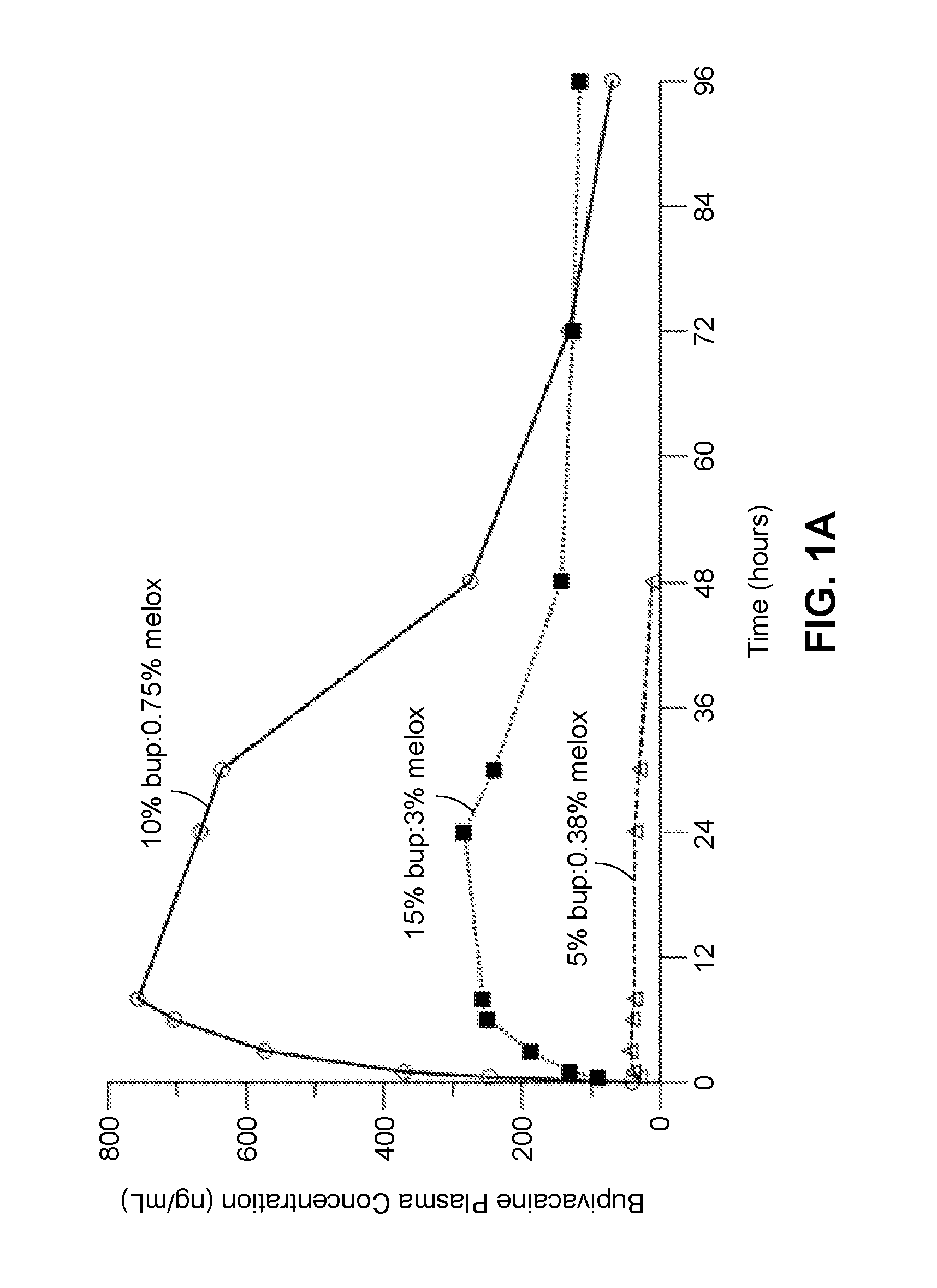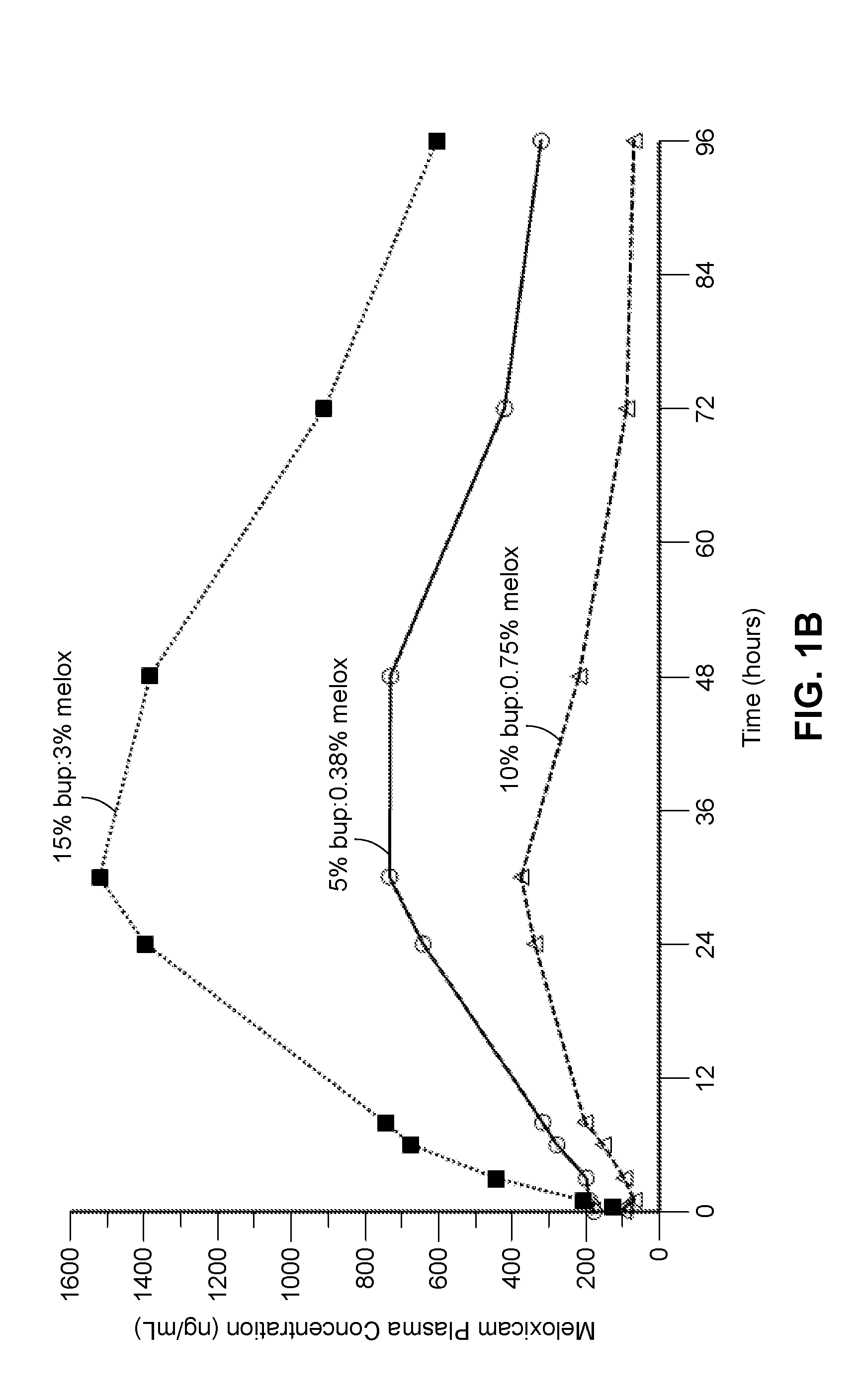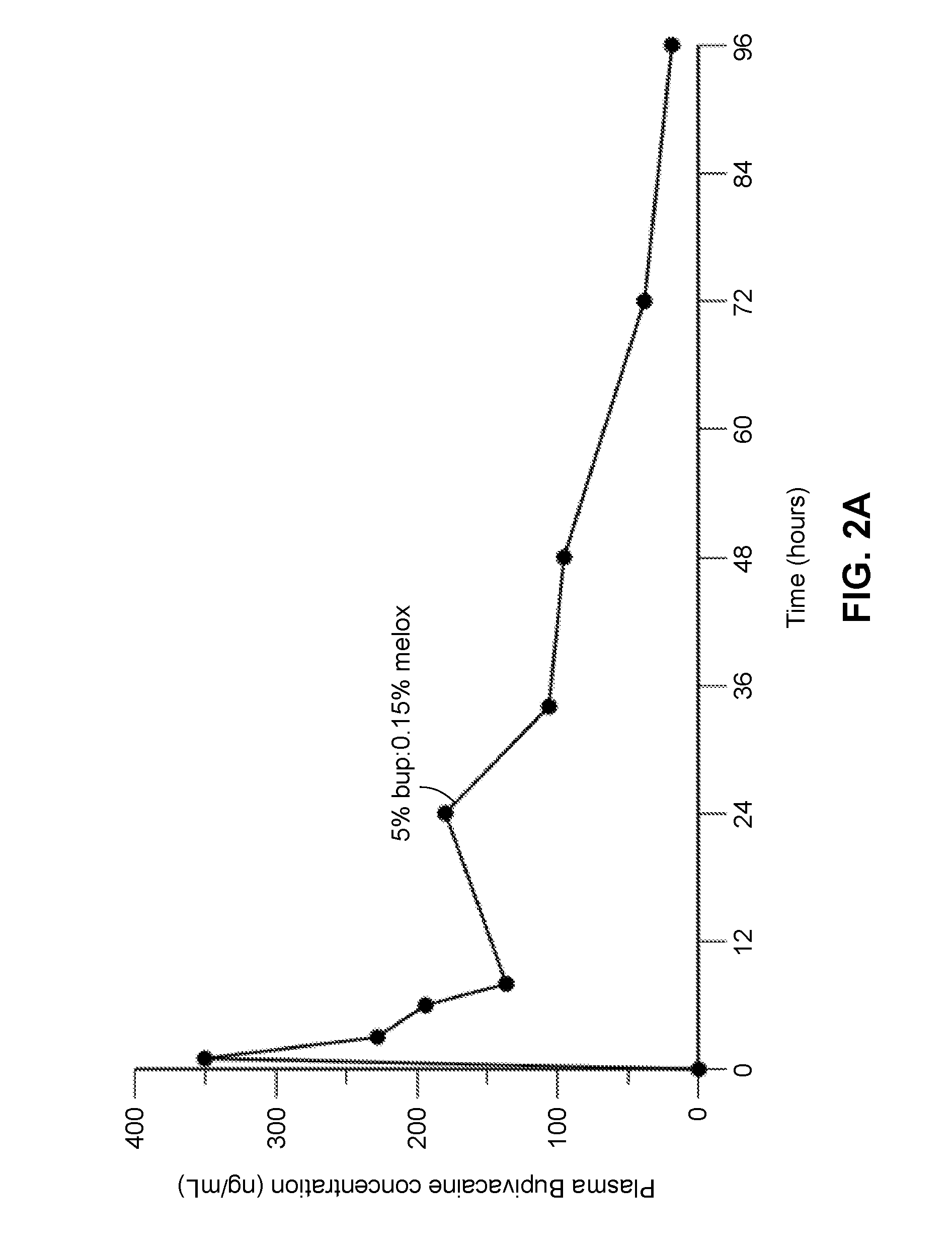Long-acting polymeric delivery systems
- Summary
- Abstract
- Description
- Claims
- Application Information
AI Technical Summary
Benefits of technology
Problems solved by technology
Method used
Image
Examples
Example
[0272]In another study, described in Example 3, compositions containing between approximately 62-63% polyorthoester of Formula I, between approximately 15-20% of an aprotic solvent, between 10% and 15% bupivacaine base, and 6% to 7.5% diclofenac were prepared.
Example
[0273]In another study, described in Example 4, compositions containing between approximately 55% to 80% polyorthoester of Formula I, between approximately 15% and 35% of an aprotic solvent, between about 5-15 wt % bupivacaine, and between about 0.05-3.5 wt % meloxicam were prepared and the in vitro release rates of bupivacaine and meloxicam was measured. The test for measuring in vitro release rates is described in Example 5, and Tables 5-1 and -5-2 in the example summarize the cumulative percent release of each drug from the compositions. The compositions comprising between 55-65 wt % POE and 16-32 wt % of an aprotic solvent provided an extended period of release of bupivacaine with between 37-75 percent of the drug released after 168 hours in vitro. Compositions comprising 70-80 wt % POE, 15 wt % of an aprotic solvent, and 0.5-1.2 wt % of an organic acid (maleic acid) provided a faster rate of drug release, with substantially all drug (e.g., over about 80%, 85% or 90% of the bupi...
Example
[0277]Example 8 describes several studies conducted to evaluate the pharmacodynamics of the bupivacaine—meloxicam compositions. Using a post-operative (POP) pain porcine model system, where a 7 cm long skin and fascia incision was made in the left flank under general anesthesia to pigs, the test composition or control article was applied to the wound. The skin incision was then closed using sterile sutures. Post-operative pain was assessed using the von Frey methodology, as described in Example 8. In a first study (Example 8A), extended release polymer composition containing 15% bupivacaine was compared to an extended release polymer composition containing 5% ropivacaine. The method of administration to the surgical site was varied to evaluate whether this resulted in any difference in pharmacodynamics. The methods tested were to either instill the composition directly onto the surface of the wound area or inject the composition subcutaneously into the lateral margins of the wound. ...
PUM
| Property | Measurement | Unit |
|---|---|---|
| Temperature | aaaaa | aaaaa |
| Time | aaaaa | aaaaa |
| Time | aaaaa | aaaaa |
Abstract
Description
Claims
Application Information
 Login to View More
Login to View More - R&D
- Intellectual Property
- Life Sciences
- Materials
- Tech Scout
- Unparalleled Data Quality
- Higher Quality Content
- 60% Fewer Hallucinations
Browse by: Latest US Patents, China's latest patents, Technical Efficacy Thesaurus, Application Domain, Technology Topic, Popular Technical Reports.
© 2025 PatSnap. All rights reserved.Legal|Privacy policy|Modern Slavery Act Transparency Statement|Sitemap|About US| Contact US: help@patsnap.com



